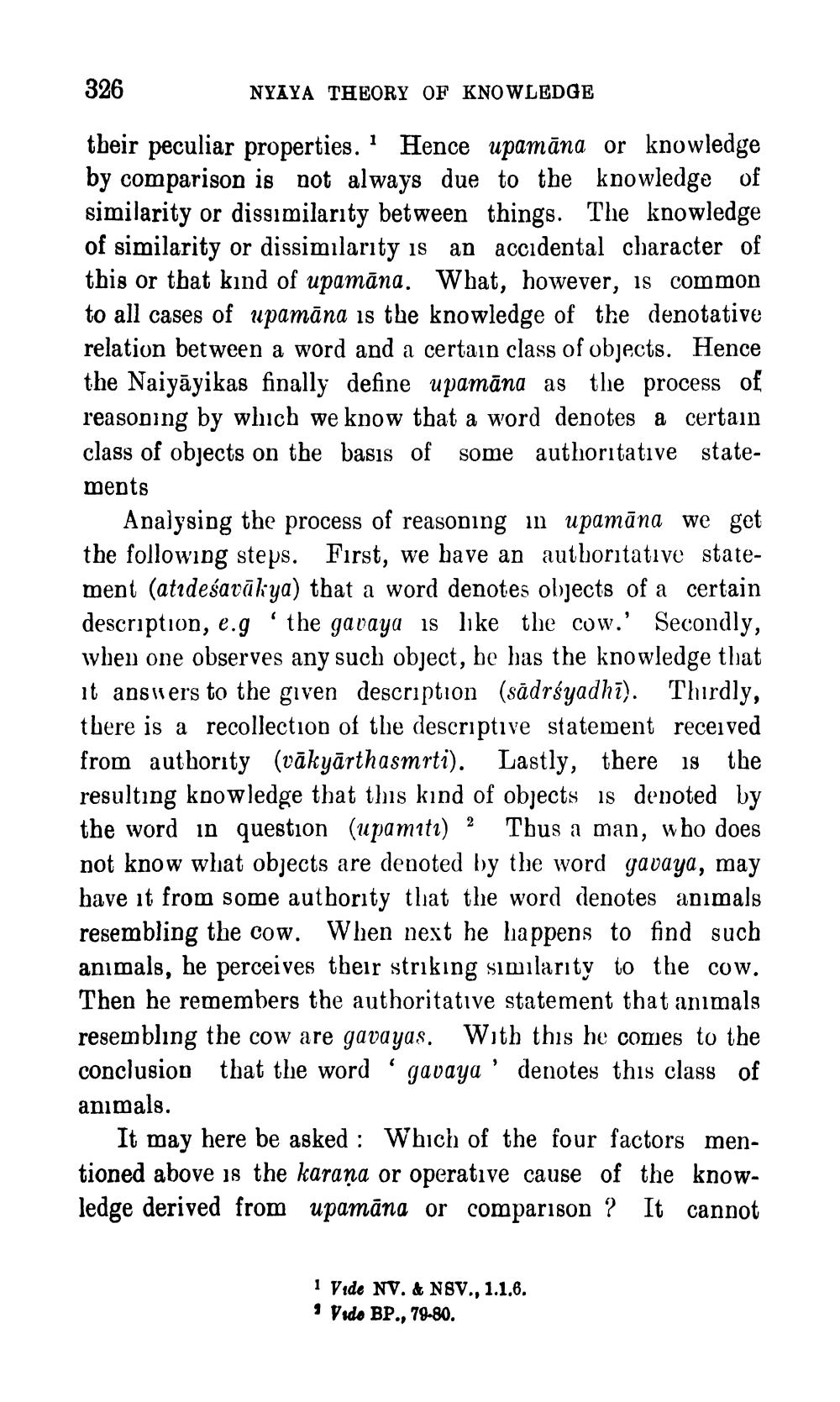________________
326
NYAYA THEORY OF KNOWLEDGE
their peculiar properties. Hence upamāna or knowledge by comparison is not always due to the knowledge of similarity or dissimilarity between things. The knowledge of similarity or dissimilarity is an accidental character of this or that kind of upamāna. What, however, is common to all cases of upamāna is the knowledge of the denotative relation between a word and a certain class of objects. Hence the Naiyāyikas finally define upamāna as the process of reasoning by which we know that a word denotes a certain class of objects on the basis of some authoritative statements
Analysing the process of reasoning in upamāna we get the following steps. First, we have an authoritative statement (atideśavākya) that a word denotes objects of a certain description, e.g the gavaya is like the cow.' Secondly, when one observes any such object, be has the knowledge that it answers to the given description (sādrsyadhi). Thirdly, there is a recollection of the descriptive statement received from authority (vākyārthasmrti). Lastly, there is the resulting knowledge that this kind of objects is denoted by the word in question (upamiti) 2 Thus a man, who does not know what objects are denoted by the word gavaya, may have it from some authority that the word denotes animals resembling the cow. When next he happens to find such animals, he perceives their striking similarity to the cow. Then he remembers the authoritative statement that animals resembling the cow are gavayas. With this he comes to the conclusion that the word 'gavaya' denotes this class of animals.
It may here be asked : Which of the four factors mentioned above is the karana or operative cause of the knowledge derived from upamāna or comparison ? It cannot
1 Vide NV. & NSV., 1.1.6. 1 Vido BP., 79-80.




